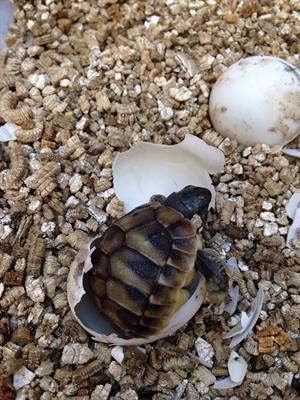
PUMPA - SMART LEARNING
எங்கள் ஆசிரியர்களுடன் 1-ஆன்-1 ஆலோசனை நேரத்தைப் பெறுங்கள். டாப்பர் ஆவதற்கு நாங்கள் பயிற்சி அளிப்போம்
Book Free DemoIn many places around the world, local people follow the tracks of the turtle to its nest. They collect the eggs for eating. Jackals, domestic dogs and pigs too dig up and eat the eggs by following the scent left by the turtle. Those eggs that escape such people and predators hatch 45–60 days later. The hatchlings slash open the leathery eggshell with the help of a tiny ‘egg-tooth’. This is like a razor blade at the tip of a hatchling’s snout. When most of the eggs have hatched, the hatchlings push themselves upwards through the sand and emerge on the surface of the beach. From here they make a hurried dash to the sea.
Explanation:

In many places around the world, local people follow the turtle's footsteps and find the way to its nest, take away the eggs for eating. Other animals follow the scent left behind by the turtle - jackals, domestic dogs and pigs dig up the holes and eat the eggs. Some eggs escape from the animals that eat other animals. These eggs will open after 45-60 days. The young animal that hatches out from an egg is called a hatchling. The hatchlings have a sharp razor-like blade at the pointed end of its nose, called "egg-tooth". With the help of the blade, it slits open the leathery shell of the eggs. After most of the eggs hatch, the young turtles push themselves up to come out of the sand. From there, they quickly move to the sea.
Meanings of difficult words:
Words | Meanings |
| Predators | Animals that eat other animals. |
| Hatchlings | Young animal that hatches out from an egg. |
| Slash | Slit or cut open. |
| Snout | Pointed edge of a nose. |
| Emerge | Come out. |
| Dash | Run or travel in a hurry. |
Reference:
State Council of Educational Research and Training (2019). Term-1 English Standard-6. Sea Turtles - Shekar Dattatri (pp. 86-92). Published by the Tamil Nadu Textbook and Educational Services Corporation.